How to plant a tree – a step-by-step guide
Learn how to plant a tree properly with our step-by-step guide, plus advice from the experts
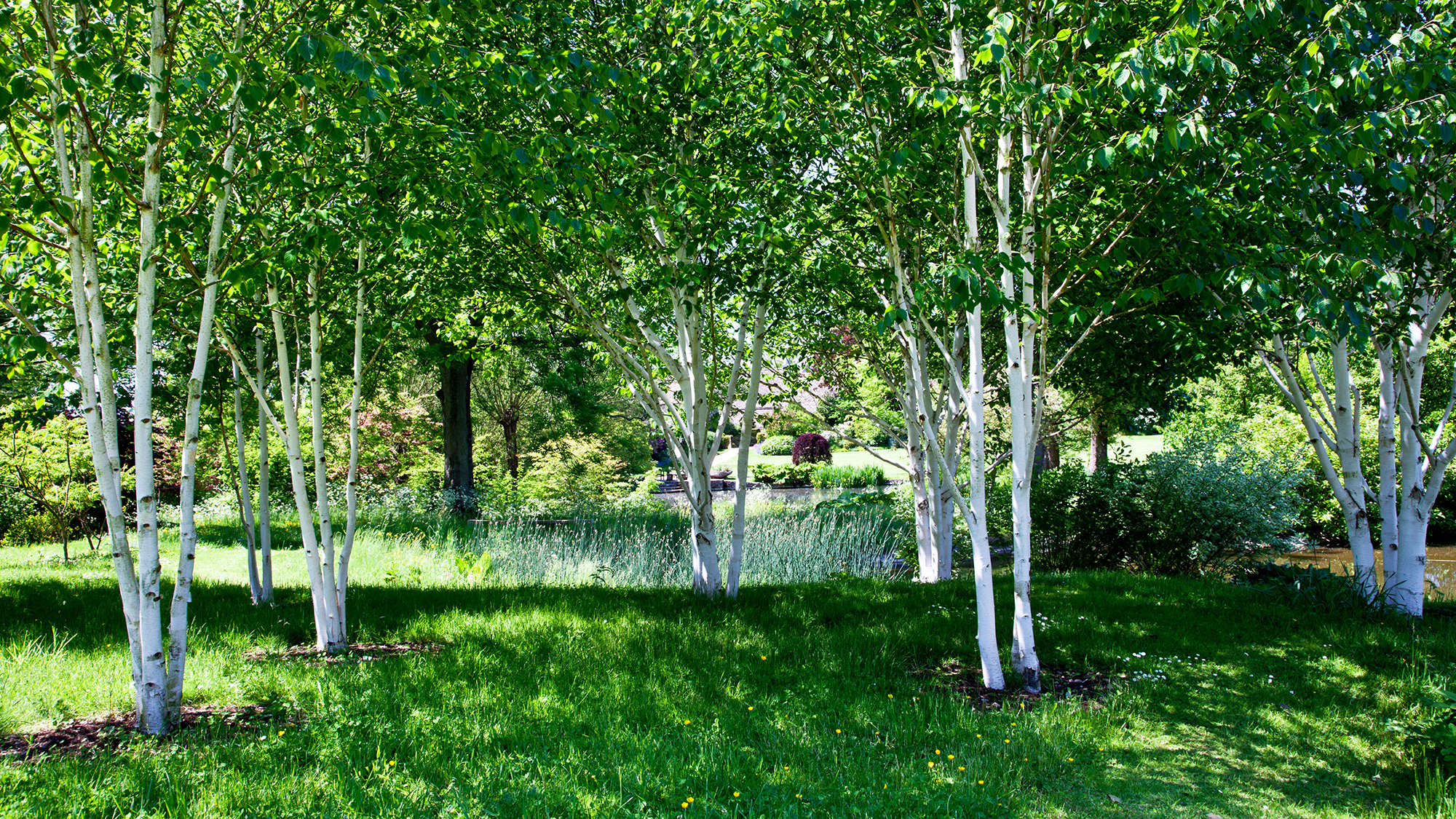

Knowing how to plant a tree properly is important for giving it the best possible start. Trees are a major design choice in a backyard and will be there for decades to come, so planting one correctly is essential.
For a tree to establish successfully there needs to be careful preparation and planning as well as an aftercare plan, plus before planting a tree there are many things to consider – as with all backyard ideas. With help from the experts, we’ve put together a step-by-step guide to planting trees to help you get started.
How to plant a tree – an essential guide
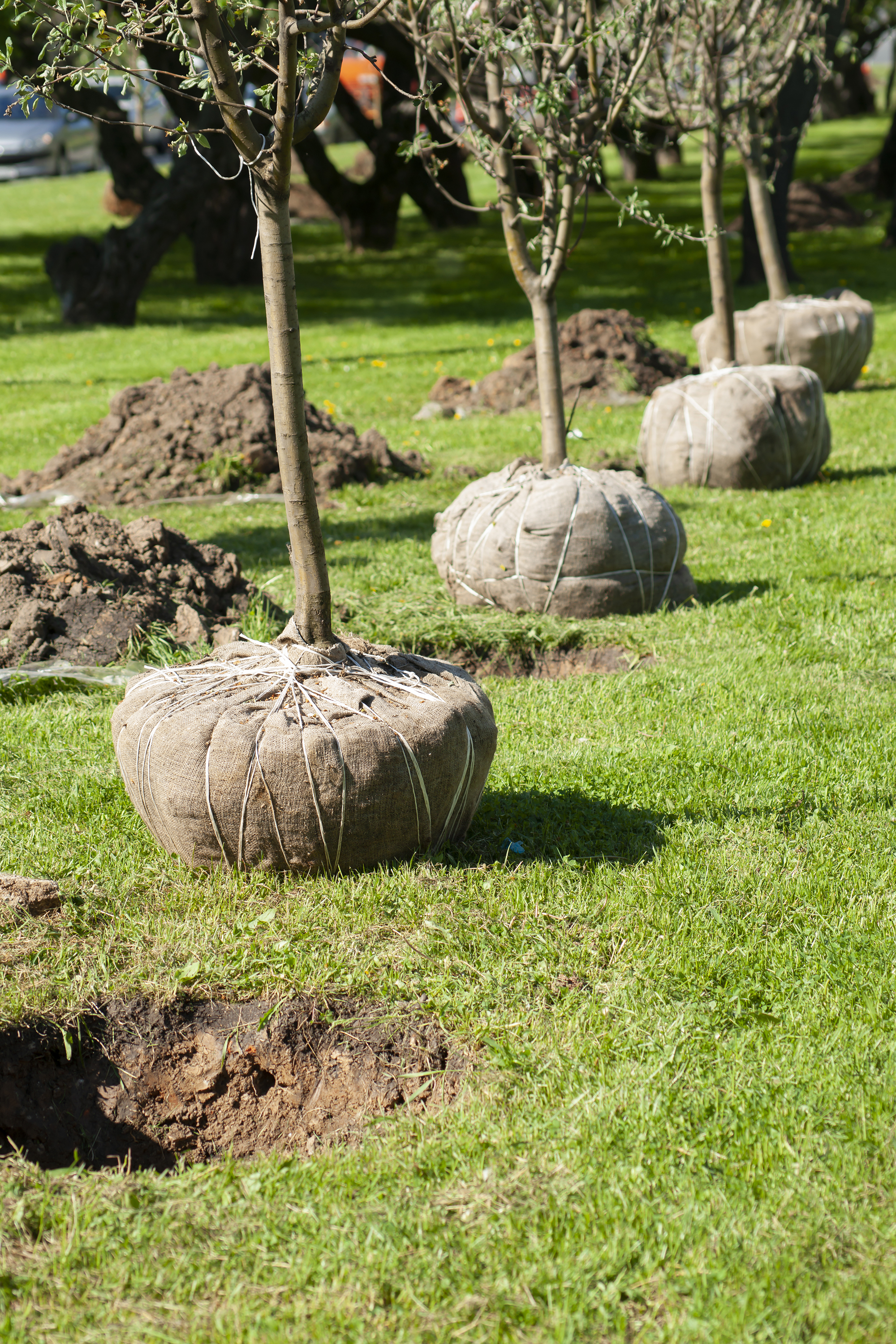
Whether you are creating a new planting system from scratch, looking to put in the best trees for privacy and screening in a backyard, or removing a tree stump to replace with a new tree, you need to know how to plant a tree properly. Here, we take you through the steps.
The process for planting bare-root, root-ball and container-grown trees is fairly similar, with just a few differences. Bare root specimens are best planted as soon as possible after they arrive, ideally within 24 hours, to prevent the roots from drying out.
1. Choose a planting site
Before planting a tree make sure that you select a site that is suitable for the tree you wish to plant. Alternatively, make sure that you select a tree which is suitable for the site you wish to fill. While it is important to plant a tree correctly, it is also important that the tree is planted in a position that has the best growing conditions for its needs. Take into account factors such as climate, light levels, soil type, and how sheltered a site is. It is also worth knowing that throughout your garden the microclimate may vary considerably.
The size of the tree is also a key factor to take into account, as Robert Bell, landscape architect and expert at trees.com explains. ‘Check the plants mature size to avoid planting too close to a home, many trees get far larger than people realize and have to be removed due to poor placement.’
He also highlights the need to think about practical considerations. ‘Be aware of any adjacent utilities both above and underground and plant the tree to avoid blocking windows or doorways in the future,' he adds.
Clear the site – first remove any plants and weeds from the area – this will prevent the tree having to compete for water and nutrients.
2. Selecting a tree to plant
Trees may be bought container-grown, root-balled (with the roots wrapped in hessian or netting) or in bare-root form (with no soil around the roots), they can also be bought in different sizes and at varying stages of maturity, from seedlings to semi-mature. Generally speaking, the younger the tree the more easily it will establish.
If planting a deciduous tree, many gardeners recommend bare-root specimens as they are cheaper, better quality and ‘take off more quickly than pot grown as roots are in direct contact with the soil,’ says gardening expert Leigh Clapp.
There is also often greater variety, they are easy to handle and they are more environmentally friendly as they do not have plastic pots. Deciduous trees and evergreens of 12ft (4m) tall are usually bought in root-balled form. While they create immediate impact in a garden, larger trees are usually more expensive.
Before buying a tree do your research, as different trees are best bought in different forms. ‘Some trees, such as walnuts and magnolias, have fleshy, brittle roots that are not well suited to bare-root planting. Among the shrubs, brooms are noted for brittle roots,’ explains Guy Barter, chief horticultural adviser for the RHS.
‘Evergreens never really go dormant so, unlike deciduous subjects, can dehydrate if their roots are uncovered. Instead, evergreens tend to be root-balled where the roots and associated soil are balled in sacking,’ he adds.
3. Check the specimen before planting
Before buying a tree to plant, check that it is healthy by examining its roots and top growth – it should have vigorous top-growth and roots with no sign of pests, disease or damage.
If buying a bare-root tree make sure the are roots well-developed and that there is an even spread in all directions. Check the roots are free of damage and disease and that they haven’t dried out. With root-balled trees, check that the wrapping is intact and that the roots have not dried out.
If you are searching for the best trees to grow in pots, ‘look for healthy, disease-free foliage, straight branches, and good root structure,’ says Robert Bell of trees.com.
‘Feel free to pull on the trunk slightly to make sure the tree is well rooted in the pot and slide the pot down slightly to make sure the plant is not root-bound, with too many roots and no soil.’
4. Soak the roots and prepare the planting hole
Before planting soak the roots in advance. Soak the bare-roots in a bucket of water for 30 minutes to one hour, or, with container grown trees, stand them in a container of water so that the compost is completely moist.
Dig a hole two to four times the diameter of the root-ball or spread of the tree roots and as deep as the roots or the container. If planting a container grown tree you can check the width by marking a hole around the pot.
5. Roughen the sides
Using a garden fork, lightly break up the soil around the sides of the hole and at the bottom, this will help loosen the soil and allow the roots to spread more easily.
A warning from the experts – do not improve the soil at this point. While some plants benefit from compost or manure being added to the planting hole at this stage, many experts recommend against this when planting trees, suggesting mulching after planting is a better way of feeding.
‘Amending the soil is a bad idea as the tree is going to need to get used to the surrounding soil even if it is less than ideal,’ says Lisa Tadewaldt of Urban Forest Professionals. ‘Trees with amended soil don’t root out as much because the soil near the base is nice, this initial rooting out of the tree is critical.’
6. Stake the tree
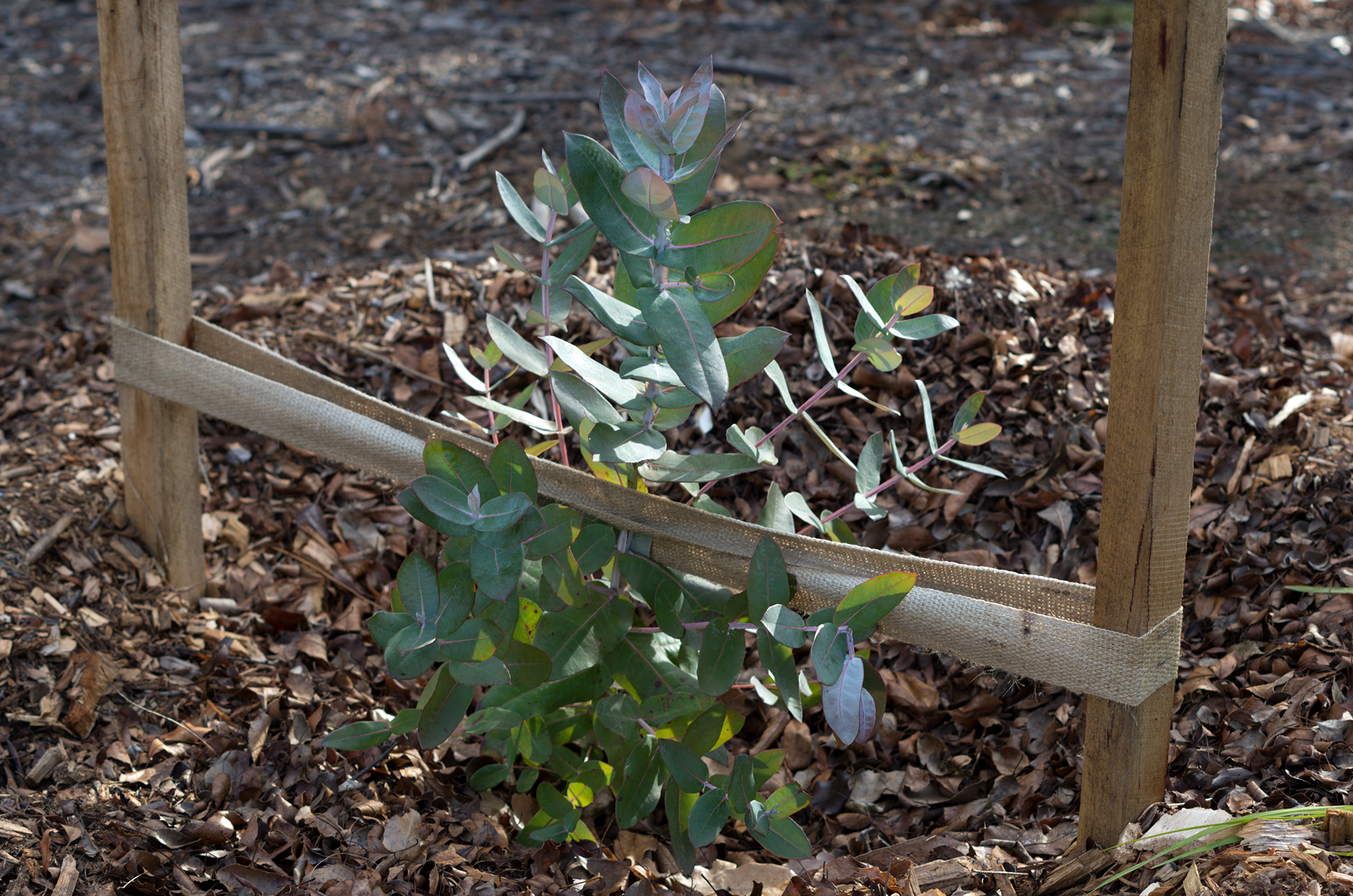
If your tree is more than 5ft tall (1.5m), or in an exposed site, then it may need staking. There is different advice on when to do this. Some suggest hammering in the stake before the tree is planted to prevent damage to the roots, others recommend staking after planting. If using a single stake, drive it in just off-centre of the planting hole.
7. Loosen the roots
If planting a container grown tree then the roots may need teasing out or breaking slightly before planting – this will stimulate growth and encourage the roots to spread.
8. Position the tree
Position the root-ball or bare roots of the tree in the hole so that the root flare of the tree (the bottom portion of the trunk where it widens to join the roots) sits around 1-2 inches (2.5-5cm) above soil level. Getting the planting depth right is critical – too deep and the roots may not receive enough oxygen; too high and they can dry out.
Robert Bell landscape architect and expert at trees.com advises to ‘set the root flare 2-3 inches higher than the surrounding soil as the disturbed soil (and tree) will settle and sink in the weeks after planting. Too high is better than too low, as higher allows more air to the tree roots, preventing suffocation.’’
Sometimes it can be useful to make a small cone of soil under the centre of the roots for them to sit on. At this stage tie the tree to the stake using a tree-tie.
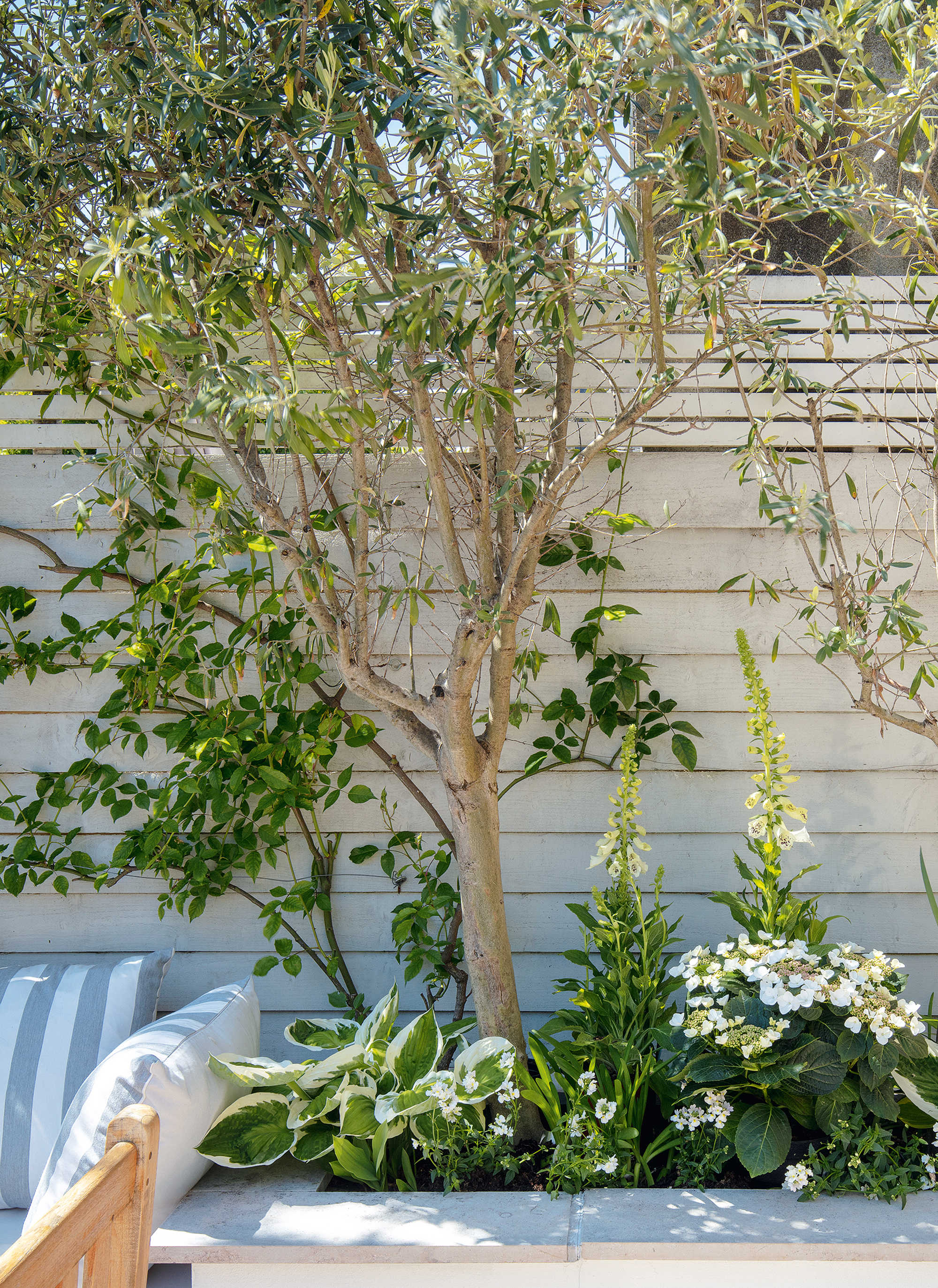
9. Backfill and water
Fill the soil from the hole back in around the roots. Firm it down in stages by lighting treading over the soil – this will prevent any air pockets. Water in well – place a hosepipe over the hole and run it until the water runs over.
10. Mulch
Mulching is important to help provide the tree with nutrients and to help the soil retain water. It also helps keep down weeds and reduces the effect of temperature extremes around the roots. Before mulching wait until the water has completely soaked in after watering, otherwise the mulch will go soggy.
‘Top the soil with 2-4 inches (5-10cm) of organic mulch. The mulch can either be of compost, wood or shredded leaves. Make sure that the mulch doesn’t touch the trunk of the tree, as it holds moisture against the trunk and can damage the bark’ says Pol Bishop, gardening expert at Fantastic Gardeners.
Feeding trees from the top by adding a layer of mulch after planting is preferred by many gardeners to the method of improving the soil in the painting hole. Add more mulch every spring.
How to care for a new tree
Trees will need watering well for 2-3 years after planting, particularly in dry weather.
‘Water the tree well after planting and every 2-3 days thereafter for 2 weeks, after that a good watering (3-4 gallons of water each time) once a week should give the tree a good start for its first season,’ advises Robert Bell, landscape architect and expert at trees.com.
It’s also important to continue weeding the area around the base of the tree for the first two years, generally over a diameter equal to the spread of its branches.
‘It’s very important to regularly inspect a recently planted tree for disease damage and pests. Also, take care of any staking problems and don’t forget to check moisture status as well,’ says Pol Bishop of Fantastic Gardeners.
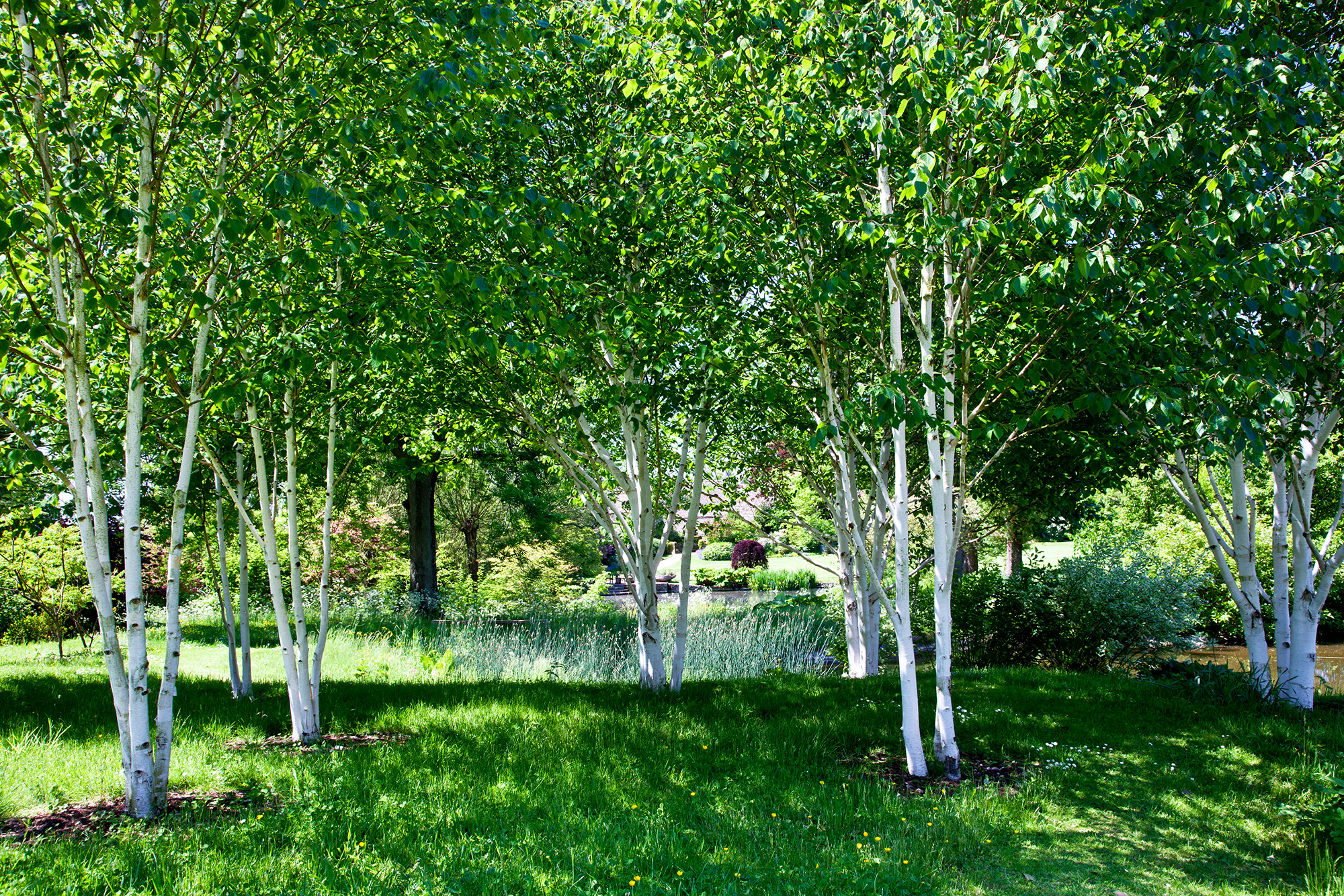
When to plant a tree
Whether you are looking for evergreens, the best trees for autumn color, or spring-flowering specimens, the best time to plant trees is while they are dormant which is generally between November and March, particularly if they are bare-root trees.
Pruning and training
All trees will require pruning and training. ‘The key to pruning is to encourage the growth of big, permanent branches, that will form the structure of a mature tree. A young tree will need pruning at three years in order to encourage the growth of structural branches,’ says Pol Bishop of Fantastic Gardeners
Sign up to the Homes & Gardens newsletter
Design expertise in your inbox – from inspiring decorating ideas and beautiful celebrity homes to practical gardening advice and shopping round-ups.

Pippa is a contributor to Homes & Gardens. A graduate of Art History and formerly Style Editor at Period Living, she is passionate about architecture, creating decorating content, interior styling and writing about craft and historic homes. She enjoys searching out beautiful images and the latest trends to share with the Homes & Gardens audience. A keen gardener, when she’s not writing, you’ll find her growing flowers on her yard for styling projects.
-
 Everyone is obsessed with vintage tiles right now – bring the nostalgic charm of this classic design feature into your home with our 5 design ideas
Everyone is obsessed with vintage tiles right now – bring the nostalgic charm of this classic design feature into your home with our 5 design ideasHonor the past with our favorite ways to decorate with vintage tiles, as suggested by interior design experts
By Eleanor Richardson Published
-
 'It's a fast reset button' – using the 1, 2 ,3 ,4, 5 decluttering method cleared my persistent mess in seconds
'It's a fast reset button' – using the 1, 2 ,3 ,4, 5 decluttering method cleared my persistent mess in secondsIt's easy, effective and so quick to do
By Ottilie Blackhall Published
-
 Water garden ideas – 9 ways to introduce soothing water to your outdoor space
Water garden ideas – 9 ways to introduce soothing water to your outdoor spaceFrom cascading fountains to wildlife ponds, there are plenty of ways to create a tranquil water garden
By Leigh Clapp Published
-
 How to grow poppies
How to grow poppiesFind out how to grow poppies to enjoy the beauty of these brightly colored tissue paper-like blooms
By Leigh Clapp Published
-
 How to grow delphiniums from seed
How to grow delphiniums from seedFind out how to grow delphiniums from seed and enjoy these colorful cottage garden favorites filling beds and borders
By Leigh Clapp Published
-
 How to grow ferns – when and how to plant and care for them
How to grow ferns – when and how to plant and care for themLearn how to grow ferns to enjoy the texture and form of these versatile plants in many areas of your garden
By Leigh Clapp Published
-
 How to grow sweet peas from seed – in borders and pots
How to grow sweet peas from seed – in borders and potsFind out how to grow sweet peas and where to enjoy their wonderful color, ruffled blooms and sweet fragrance in your garden
By Pippa Blenkinsop Published
-
 How to make fat balls for birds – easy steps feed our feathered friends
How to make fat balls for birds – easy steps feed our feathered friendsLearn how to make fat balls for birds to ensure their wellbeing throughout the winter
By Holly Reaney Published
-
 Planning a kitchen garden – from layouts to picking the best crops
Planning a kitchen garden – from layouts to picking the best cropsPlanning a kitchen garden is easy with this expert advice – whether yours is in beds, borders or a dedicated patch – you're guaranteed success
By Leigh Clapp Published
-
 How to grow cosmos – expert tips on when and where to plant these flowers
How to grow cosmos – expert tips on when and where to plant these flowersLearn how to grow cosmos to add bright color in your garden from summer through to fall with their beautiful blooms
By Leigh Clapp Published